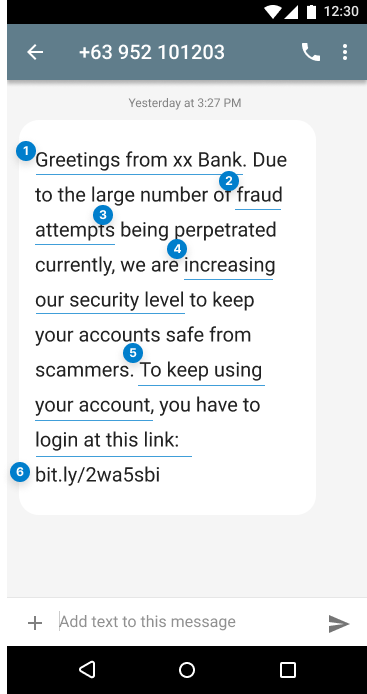Also known as Security upgrade scam
Where it is usually done: Email (Phishing), SMS (Smishing), Voice Call (Vishing)
How it can look

- Scammers will pretend to represent your bank or provider.
- Scammers will mention hacking or suspicious activity to scare you into doing what they say.
- Scammers will use security as a reason for you to do an action.
- Scammers will say that your account will be disabled to force you to log in.
- The link will lead you to a fake website that will steal your login details.
View image 🠑
What it is
This is when a scammer who claims to be from your bank, credit card company or other provider says that the company is performing some type of security upgrade or test.
What happens next is that the scammer will ask for your sensitive data (like personally identifiable information, banking and credit card details, and passwords), make you provide your login details or tell you to click on a link to a website that looks legitimate but is actually fake.
If you give your information, the scammer will use it to access your real account and steal your money.
Don’t be a victim of the security scam. Never provide any personal or financial details and never open any links from an email or SMS.
What you should do
If someone contacts you and says that a company is doing things to raise or check security, always verify this first by contacting the company using the official hotline. Remember, company representatives will never ask for your personal details or try to rush you into performing an action.
To help keep yourself scam proof, you should learn about the different types of scams so you know what to look out for. Read our scam types section and browse our tips to stay safe.


